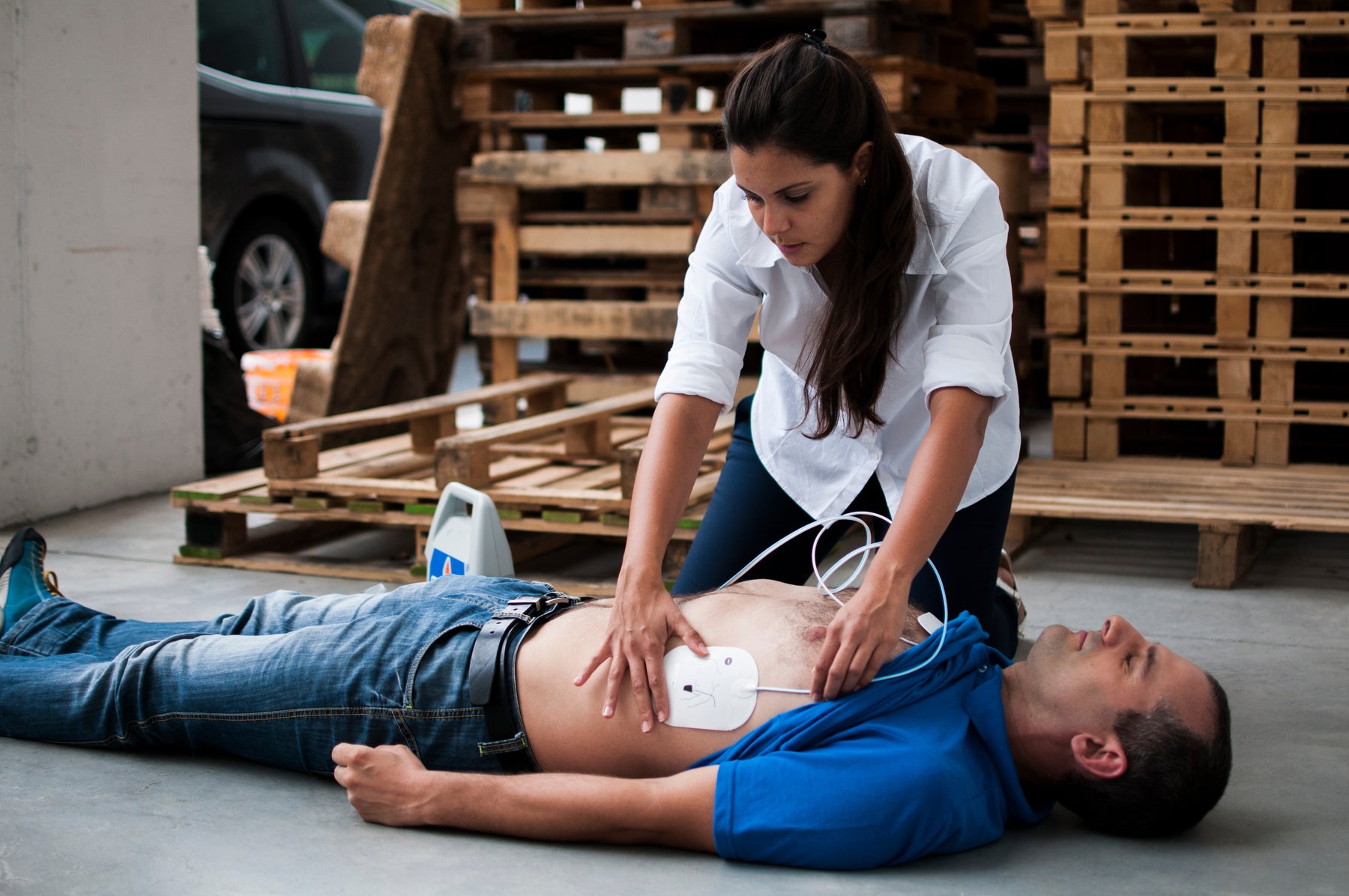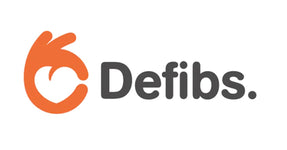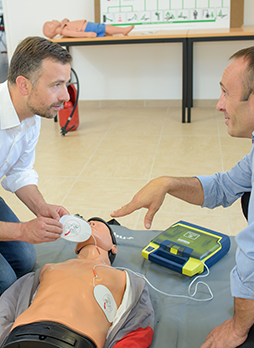Available via chat

The Surprising Ease of Using a Defibrillator, Even without Prior Experience
The Surprising Ease of Using a Defibrillator, Even without Prior Experience

Have you ever been in a situation where someone suddenly collapsed and needed immediate medical attention? It's a scary scenario that can happen anytime, anywhere. But what if we told you that saving their life could be as easy as using a defibrillator – even if you have no prior experience? That's right! In this blog post, we're going to debunk the myth that only medical professionals can use defibrillators and show you just how simple it is to operate one. So, let's dive in and discover how easy it is to become a lifesaver!
Introduction to Defibrillator Basics
An AED, or automated external defibrillator, is a device that can be used to treat sudden cardiac arrest (SCA). SCA is a condition in which the heart suddenly stops beating. AEDs are designed to be used by people who have no medical training.
When someone has SCA, their chances of survival decrease with each passing minute. That’s why it’s important to act quickly and call 999 as soon as possible. If an AED is available, it should be used as soon as possible after SCA occurs.
An AED analyzes the heart rhythm and delivers an electric shock to the heart if needed. The shock helps the heart re-establish an effective rhythm.
Using an AED is relatively simple. Most AEDs have clear instructions and will prompt you through each step. Many also have visual aids, such as pictures or videos, to help guide you through the process.
The Step-By-Step Guide to Proper Defibrillator Usage

When someone has a cardiac arrest, every second counts. A victim’s chances of survival decrease by 10% with each passing minute. This is why it’s so important to know how to use a defibrillator, even if you’ve never used one before.
Here’s a step-by-step guide to using a defibrillator:
1. Check for signs of life. If the victim is unresponsive and not breathing, they may need CPR or defibrillation.
2. Call 999. Once you’ve determined that the victim needs CPR or defibrillation, it’s time to call emergency services.
3. Open the victim’s shirt and attach the pads. Most defibrillators have two adhesive pads that need to be attached to the victim’s bare chest—one on the right side of the chest and one on the left side, just below the collarbone.
4. Follow the instructions on the machine. Once you’ve attached the pads, follow the voice prompts or written instructions on the machine to deliver the shock.
5. Continue CPR until Medical Help arrives. After delivering the shock, continue performing CPR until emergency medical services take over.
Benefits of Using a Defibrillator
When someone goes into cardiac arrest, every second counts. A defibrillator is a simple, effective device that can save a life by delivering an electrical shock to the heart to restore its normal rhythm. Defibrillators are designed for easy use, and anyone can learn how to use one with minimal training.
There are many benefits to using a defibrillator, even for those without prior experience. Defibrillators are:
Easy to Use: Defibrillators are designed for easy use, and anyone can learn how to use one with minimal training.
Effective: When used properly, defibrillators can be highly effective in restoring normal heart rhythm.
Portable: Defibrillators are portable and can be easily transported to the site of an emergency.
Safe: Defibrillators are safe to use and pose no risks to the user or the patient.
Common Misconceptions about Defibrillators
There are many misconceptions about defibrillators and how to use them, which can often lead to people feeling intimidated or hesitant to use one. However, defibrillators are actually very easy to use, even for those without any prior medical experience. Here are some of the most common misconceptions about defibrillators:
1. Defibrillators are only for trained medical professionals.
Anyone can use a defibrillator, regardless of their training or experience. The devices are designed to be easy to operate, and clear instructions are provided on how to use them properly.
2. Defibrillators are expensive and difficult to maintain.
Defibrillators are not expensive, and they are actually quite easy to maintain. Units come with a user manual that outlines all the necessary maintenance procedures.
3. Defibrillation is painful.
Defibrillation is not painful, and in fact it is often the only thing that can save someone's life in a cardiac arrest situation. The electrical shock delivered by the defibrillator is brief and does not cause any discomfort.
Types of Defibrillators and Which is Best for You
There are two main types of defibrillators: manual and automatic. Manual defibrillators require the user to manually select the appropriate shock dosage, while automatic defibrillators automatically select the shock dosage based on the patient’s condition.
So, which type of defibrillator is best for you? If you are trained in CPR and have experience using a defibrillator, then a manual defibrillator may be a good option for you. However, if you do not have experience using a defibrillator, then an automatic defibrillator may be a better option for you.
What to Do After You Use a Defibrillator
If you find yourself in a situation where someone has collapsed and is not responding, it is important to act quickly. The first step is to call 999. Once emergency medical services are on their way, you can begin to assess the situation. If the person is not breathing and does not have a pulse, they may be experiencing a cardiac arrest. In this case, using a defibrillator may be necessary.
Defibrillators are designed to be easy to use, even for those without prior medical experience. Most units will come with clear instructions on how to operate them. To use a defibrillator, you will first need to attach the pads to the person's chest. Once the pads are in place, you will need to press the button that says "shock." It is important to follow the instructions of the defibrillator and only shock the person if advised to do so by the unit.
After you have used a defibrillator, it is important to continue monitoring the person until medical help arrives. If they regain consciousness, be sure to keep them calm and still. Check their pulse and breathing regularly and provide any necessary CPR if needed.
Conclusion
Defibrillators are essential pieces of equipment that can save lives, but it is often assumed that they are difficult to use without prior experience. This article has shown the surprising ease of using a defibrillator, even with no prior knowledge or training. With the right instructions and practice, anyone could potentially become proficient in operating a defibrillator. We hope this article has given you confidence in knowing that you can help someone in need if ever faced with an emergency situation involving a defibrillator.


